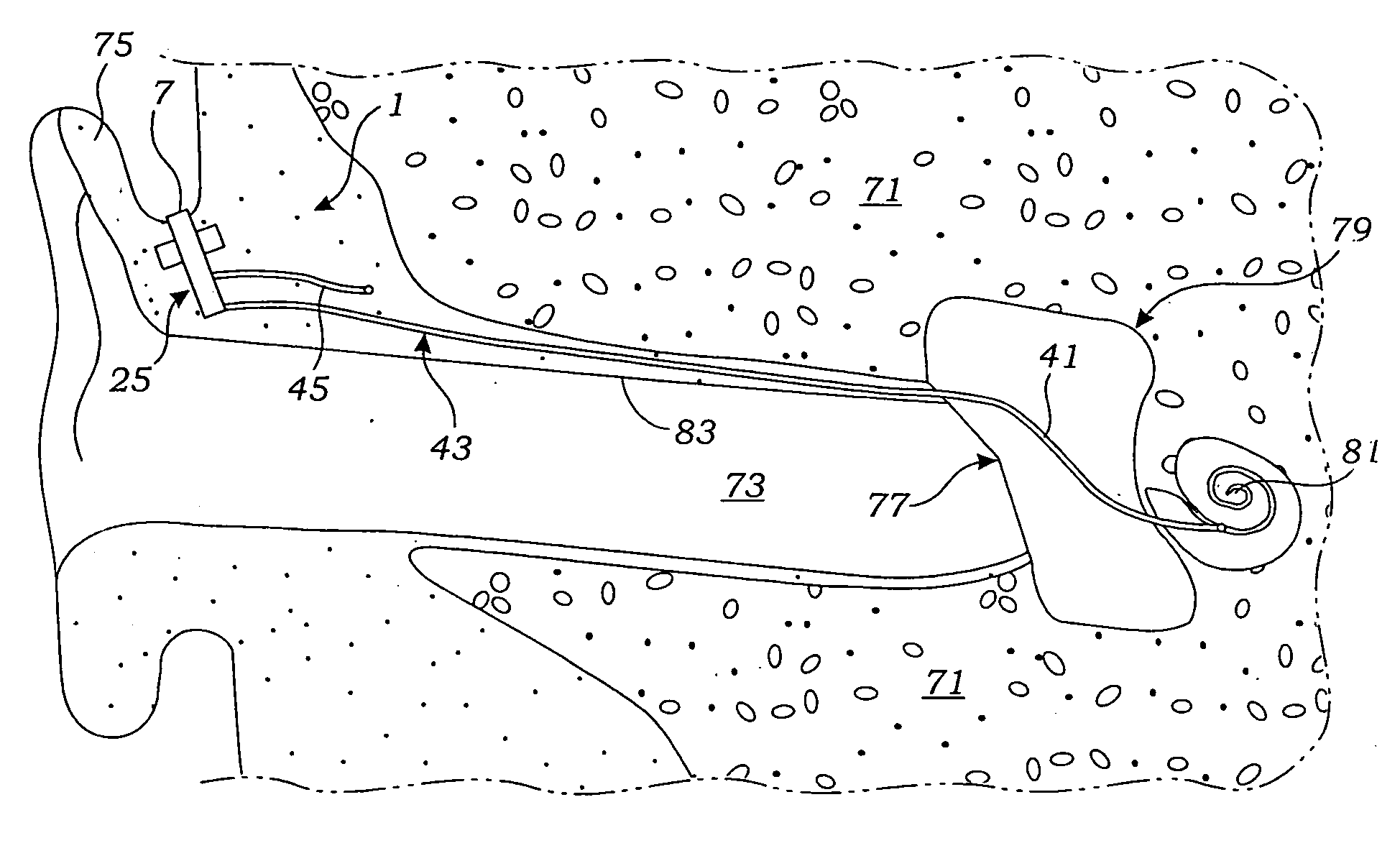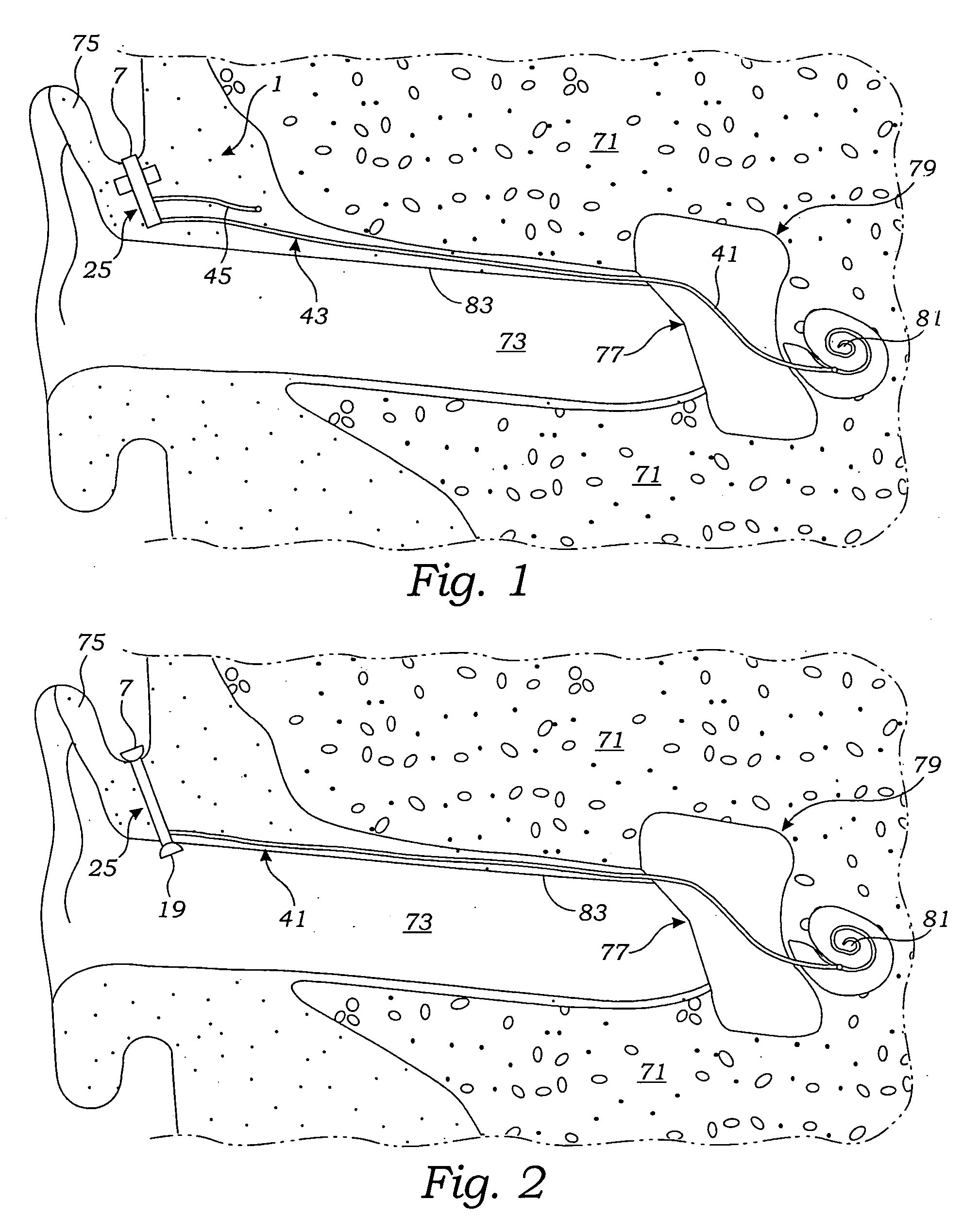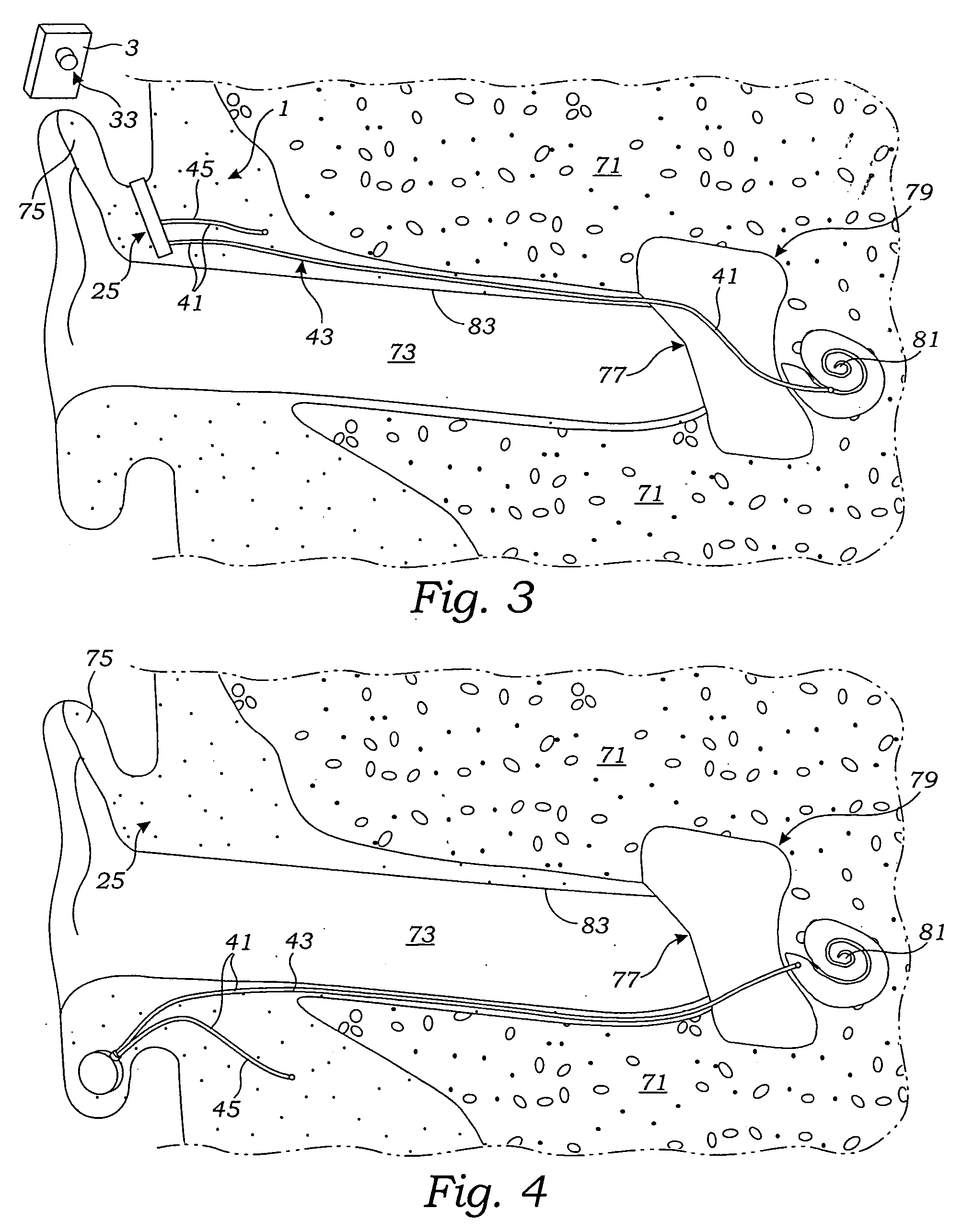Cochlear ear implant
a technology of cochlear implants and implants, which is applied in the direction of head electrodes, internal electrodes, therapy, etc., can solve the problems of profound hearing loss, electrical energy cannot be generated and transmitted to the brain, and the use of hearing aids cannot enable such ear to process sound, etc., to achieve the effect of not destroying residual hearing
- Summary
- Abstract
- Description
- Claims
- Application Information
AI Technical Summary
Benefits of technology
Problems solved by technology
Method used
Image
Examples
Embodiment Construction
[0042] While the present invention is susceptible to the embodiment in various forms, as shown in the drawings, hereinafter will be described the presently preferred embodiments of the invention with the understanding that the present disclosure is to be considered as a exemplification of the invention and is not intended to limit the invention to the specific embodiments illustrated.
[0043] With reference to FIGS. 1-12, the cochlear implant 1 of the present invention includes one or more modules for housing a power supply and the active and passive electronics for processing sound into electrical stimuli which can be interpreted by the brain as sound. In addition, the cochlear implant 1 includes an electrode array 41 for stimulating the nerves of the cochlea.
[0044] As shown in FIGS. 1, 2, 4, 6, 7, and 9, the cochlear implant may include a single modular unit 25 which houses all of the active electronics including processor, power supply and microphone and is positioned within the ...
PUM
 Login to View More
Login to View More Abstract
Description
Claims
Application Information
 Login to View More
Login to View More - R&D
- Intellectual Property
- Life Sciences
- Materials
- Tech Scout
- Unparalleled Data Quality
- Higher Quality Content
- 60% Fewer Hallucinations
Browse by: Latest US Patents, China's latest patents, Technical Efficacy Thesaurus, Application Domain, Technology Topic, Popular Technical Reports.
© 2025 PatSnap. All rights reserved.Legal|Privacy policy|Modern Slavery Act Transparency Statement|Sitemap|About US| Contact US: help@patsnap.com



